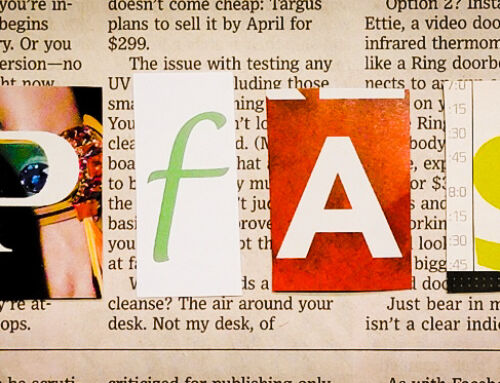View by Topic
Recent Articles
-
New Environmental Laws from the 2024 Maryland Legislative SessionSaturday, April 27th, 2024
-
EPA Designates PFOA and PFOS as Hazardous Substances under Superfund LawSaturday, April 20th, 2024
-
Federal Government Finalizes New Efficiency Standards for LightbulbsSaturday, April 13th, 2024
-
2024 IECC is Final After Addressing Preemption IssuesSaturday, April 6th, 2024
-
Settlement Portends Broad Failure in Attempts to Ban Natural GasSaturday, March 30th, 2024
View by Month/Year
“Green Building Law Update” Headlines
Recent Articles & News from
Stuart Kaplow’s blog
at GreenBuildingLawUpdate.com
- EPA Takes Action: PFOA and PFOS Now Hazardous Substances Under Superfund Law April 21, 2024
- Shedding Light on the Future: The Evolution of Lightbulbs in the Wake of New Energy Efficiency Standards April 14, 2024
- 2024 International Energy Conservation Code is Final After Addressing Preemption April 7, 2024
- Settlement Portends Broad Failure in Attempts to Ban Natural Gas March 31, 2024
Subscribe to the Green Building Law Update!
Stuart Kaplow brings his expertise and extensive experience to the table with his unique digital publication, "Green Building Law Update". Subscribers receive regular updates to keep them informed about important issues surrounding Environmental Law, Green Building & Real Estate Law, as well as the emerging demand for Environmental Social Governance (ESG).
Get fresh content through the lense of Stuart Kaplow's cutting-edge expertise, innovative commentary and insider perspective. Don't miss another issue! Subscribe below.

France is an Example of How Not to do Residential Greenhouse Gas Reduction
The country that is home to some of the most iconic buildings erected by humankind, from the Eiffel Tower to the Notre Dame Cathedral and the Palace of Versailles is failing its current inhabitants and decimating residential real estate with deeply flawed greenhouse gas emissions standards for rental properties.
France has more than 35 million dwellings and more than a quarter of those residences fall into the country’s worst greenhouse gas emission categories, with an Environmental Performance Certificate (EPC) rating of F or G. And that is not surprising because more than 36% of those dwellings were constructed before 1948.
Buildings that consume more than 450 kWh per m² fall into category G+ (.. worse than G). And that is significant because, since January 1, 2023, a residential building owner is not permitted to rent a property rated G+.
This government policy, though commendable for its environmental aspirations, has negative implications for both tenants and building owners alike.
By way of background, all single family homes and flats offered for rent or sale in France must include an evaluation of their energy consumption, the Diagnostic de performance énergétique, energy performance diagnostic, or DPE. In the finest example of French bureaucracy (.. possibly better than anything from the Ancien Régime, that was the social and political system in the Kingdom of France beginning in the 15th century), after 2020, the “real” power consumption of a building is no longer a consideration in DPE. Instead, DPE is an extraction based on factors including a structure’s building materials, orientation, mechanical systems, etc.
Under an updated schedule, the government has mandated that from January 1, 2025, forward, buildings that are rated below F or 420 kWh per m² will no longer be allowed to rent flats. That is 5.2 million dwellings rated F and G, or 17% of total housing stock, will become ineligible for rental. Any buildings then rented may remain under current leases but will be considered “non-decent”.
France’s Loi climat et résilience includes a provision establishing the criteria for a residential space to be classed as “decent”. Of import, buildings carrying restricted DPE ratings are considered non-decent, which means that a residential tenant that is currently an occupant (.. of even a single flat in a multi tenanted building) can require the building owner to do the necessary energy related work to improve the units rating.
Increasing numbers of residential buildings will be impacted by these restrictions in the coming years.
Moreover, while a residential tenant in a non-decent building is required to continue to pay rent, today, the rental rate for buildings rated F and G cannot be increased; something that is intolerable as it exacerbates the decay of the affordable housing stock.
Not insignificantly, the DPE letter rating is required to be displayed in all estate agency advertisements, both for rent and sale. Advertisements for the sale of buildings rated F and G or G+ must include the line logement à consommation énergétique excessive, or ‘housing with excessive energy consumption’. Fortunately, buildings can still be sold even if they are rated G+, as may be the instance for historic flats in Paris and old stone farmhouses outside of Epernay, although many historic rental properties have suffered a more than 20% reduction in value in anticipation of the renovation costs associated with this law.
France’s bold move to restrict the rental of buildings with high EPC ratings, driven by the National Low Carbon Strategy targets a 49% cut in greenhouse gas emissions from buildings by 2030 is a commendable step towards a more sustainable future. However, the unintended consequences for both tenants who are being priced out of the market and building owners in devastating the real estate market cannot be ignored.
Striking a balance between environmental goals and social equity is crucial to ensure that the transition to a greener society is not only done so on the backs of the people who are tenants or not done to further destroy the value of the buildings such that money cannot be borrowed to finance necessary improvements. Many believe changing hundreds of years of building in a few short months is too much too fast and may well bring a similar result as the gilets jaunes, the yellow jacket wearing demonstrators, who protested in France in 2018 over a proposed carbon tax on petroleum.
As the number of affected properties continues to rise, policymakers, landlords, and tenants must collaborate to find innovative solutions that promote environmental responsibility without further dramatically decreasing the value of the real estate market or disproportionately impacting vulnerable communities. Only through thoughtful and inclusive market driven strategies can France navigate the complexities of its public policy created housing crisis and successfully build a more sustainable and equitable future.
France is much farther down the rabbit hole of climate change mandates than the U.S. and should be an example to others, like Maryland as the state struggles to promulgate building energy performance standards, that apocalyptic environmentalism mandating a drastic reduction in consumption is not how to do residential building greenhouse gas emission reduction, but rather techno optimism based actions where ingenuity and science, properly applied, can produce our way out of our predicament.
A live webinar “With the Maryland BEPS regulations on “HOLD” what is a Building Owner to do?” 30 talking points in 30 minutes, Tuesday, February 20 at 9 am EST presented by Stuart Kaplow and Nancy Hudes on behalf of ESG Legal Solutions, LLC. The webinar is complimentary, but you must register here.









